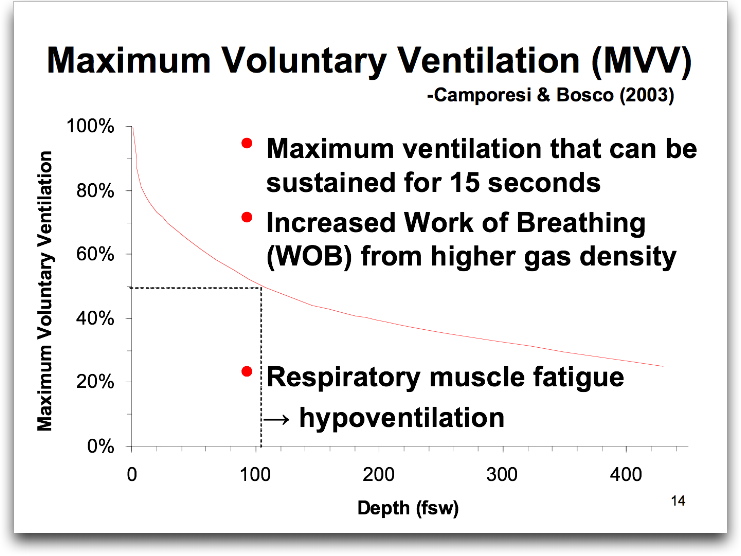I would also add that not adjusting your regulator from pre-dive to dive can also lead to problems. I was at 90+ feet on a dive and began to get the tunnel vision. I did the deep exhale followed by the slow deep inhale routine a few times and the tunneling went away. Only then did I realize my regulator's adjustment was set full on pre-dive.
The pre-dive/dive switch on most regs is called a Venturi switch. It changes the position of a vane inside the reg to either help along the flow of air
once flow has been established (ON/"dive" setting) or not (OFF/"pre-dive" setting). Some regs have another user-adjustable knob that changes the cracking pressure of the reg. Cracking pressure refers to how much pressure needs to be exerted on the demand valve
in order to start the flow of air.
I think when most people talk about their regs being out of adjustment and breathing "hard" at depth it's the cracking pressure that they're complaining about. Without a user-adjustable knob on the reg, the adjustment is made by changing the position of the lever height (provided that the first stage is delivering the correct i.p.). This fix generally entails "turning a screw" where the hose attaches to the second stage. If you don't know how to do this, then I'd recommend taking the reg to your favorite trustworthy reg technician.
It's also worth noting that properly adjusted second stages will bubble air if you place them inverted (with mouthpiece up) below the surface of the water. The bubbling should stop if you turn the reg over (with diaphragm on top/mouthpiece down). The key here is how many inches of water the actual diaphragm is below the surface of the water. With most regs, the distance between diaphragm and mouthpiece is about 2 inches. Since the cracking pressure for most regs should be set in a range from 1 - 1.4 inches of water, air should begin to flow
before the inverted mouthpiece is submerged. Octo regs are often tuned to have higher cracking pressures (1.2 - 1.6 inches of water) to prevent freeflow issues. Most people will find a reg uncomfortable to breath when the cracking pressure reaches 2.0+ inches of water.
Placing the Venturi switch to ON/"dive" should deliver more gas at depth once the gas has started to flow. This is probably a good thing, since, as we all know, our breathing gas becomes more dense at greater ambient pressure. Nevertheless, my gut tells me that a correctly adjusted second stage with Venturi switch set to OFF/"pre-dive" should still provide enough gas at depth so that CO2 retention is not an issue. Perhaps someone with more experience fiddling with regs will weigh in on the matter.
This being said, users should ensure both the cracking pressure
and Venturi switch are set properly on their regs. (Good compromise?)






 I still use the same pair which I acquired the next day (1999). Jet Fins for all other applications.
I still use the same pair which I acquired the next day (1999). Jet Fins for all other applications. 
